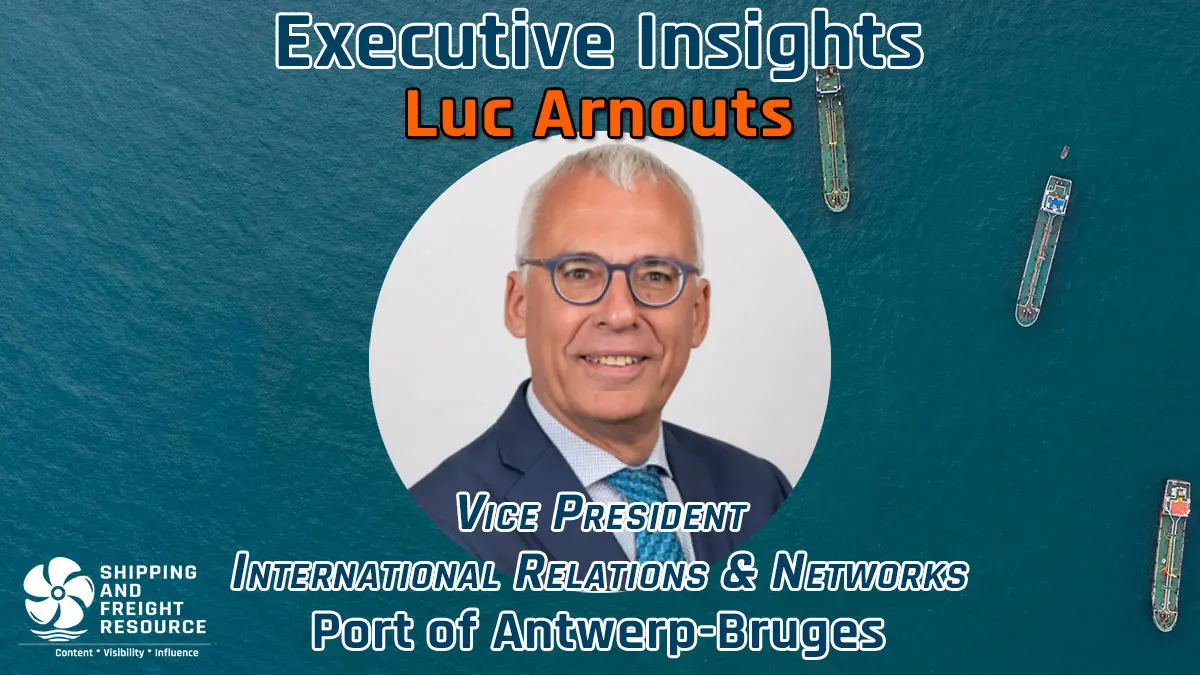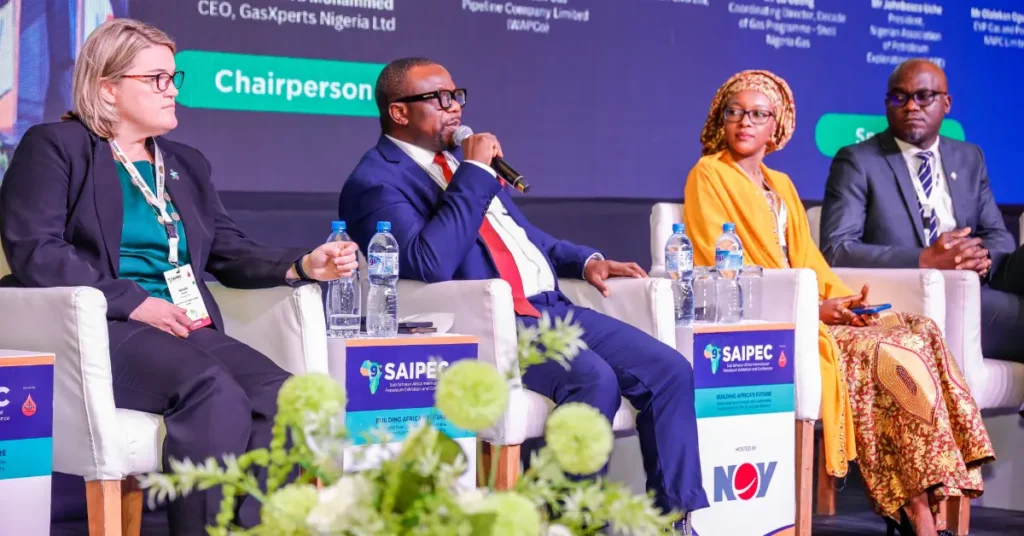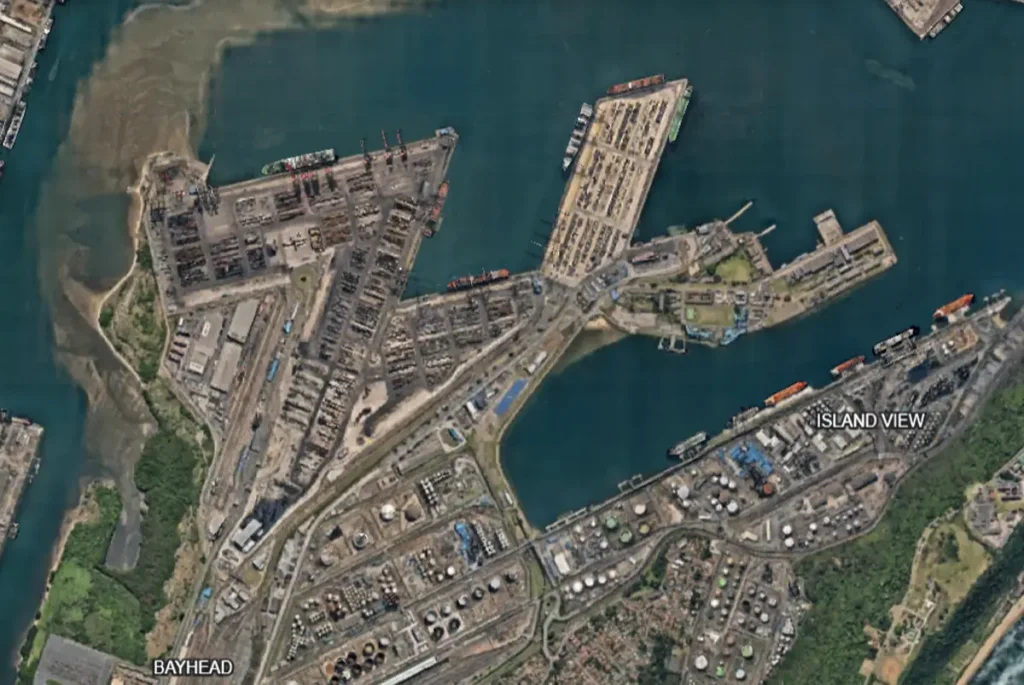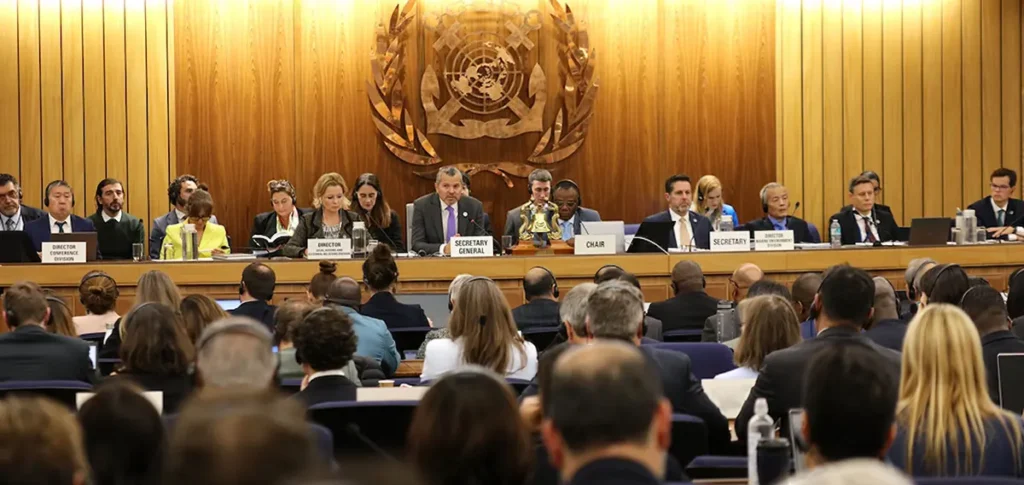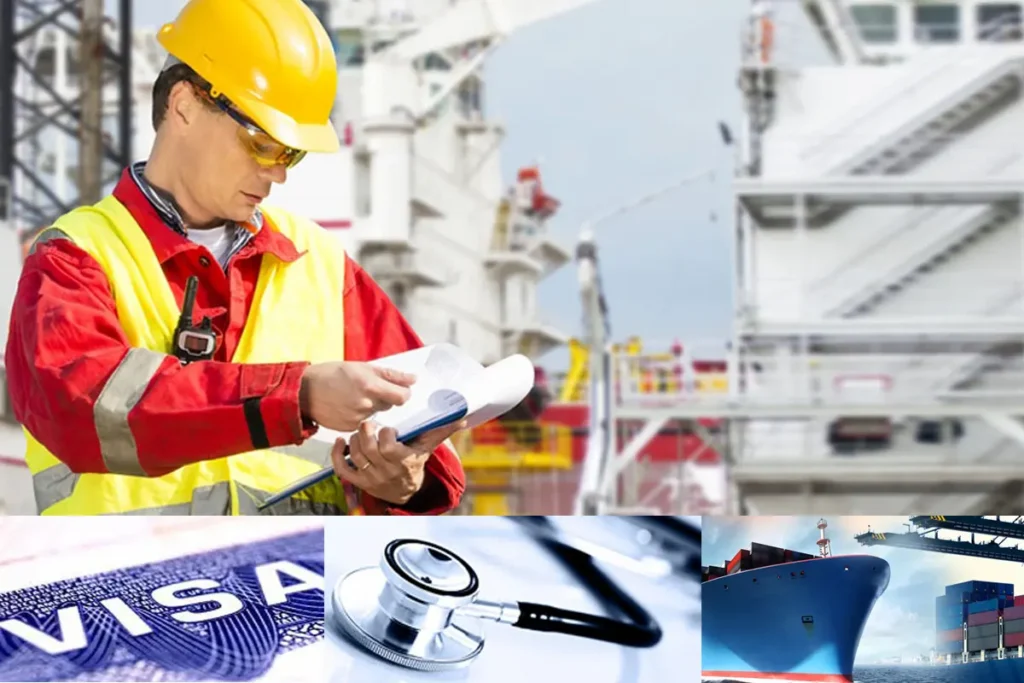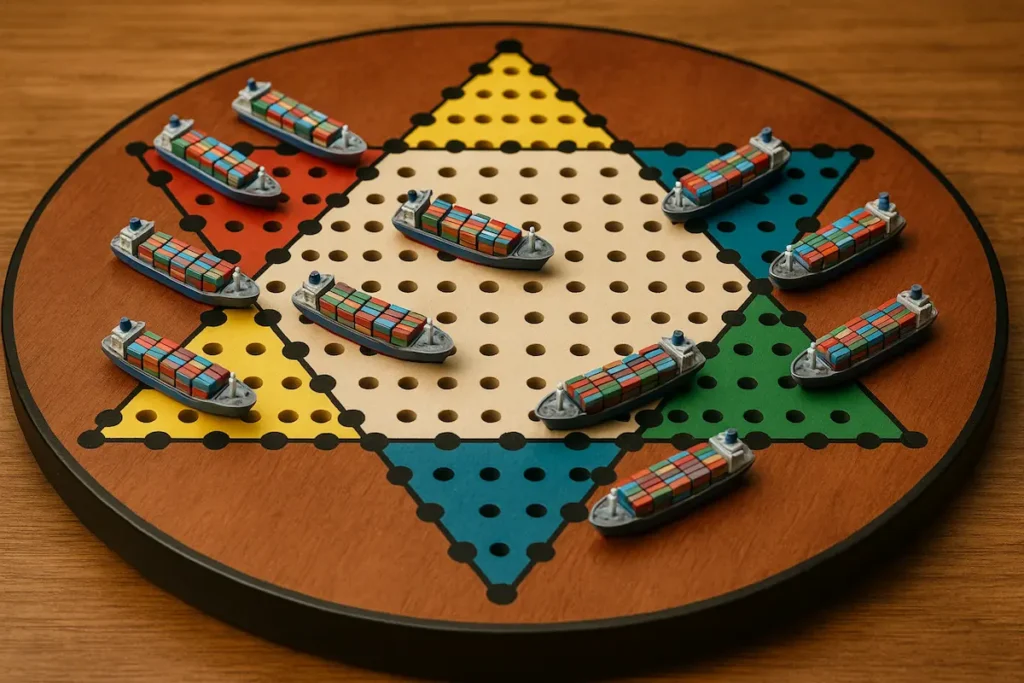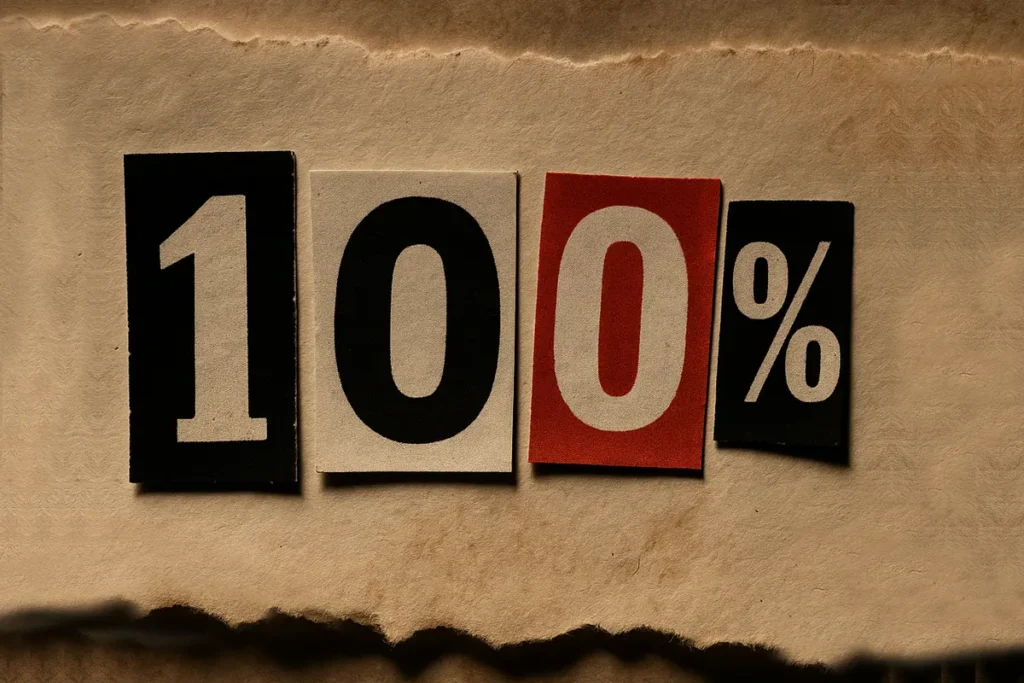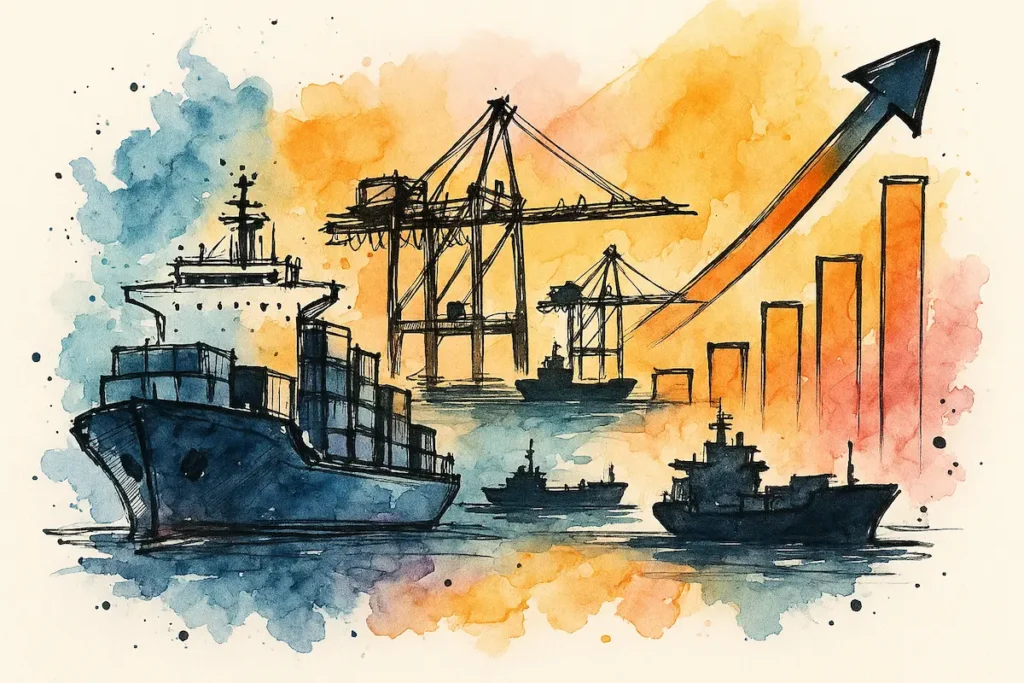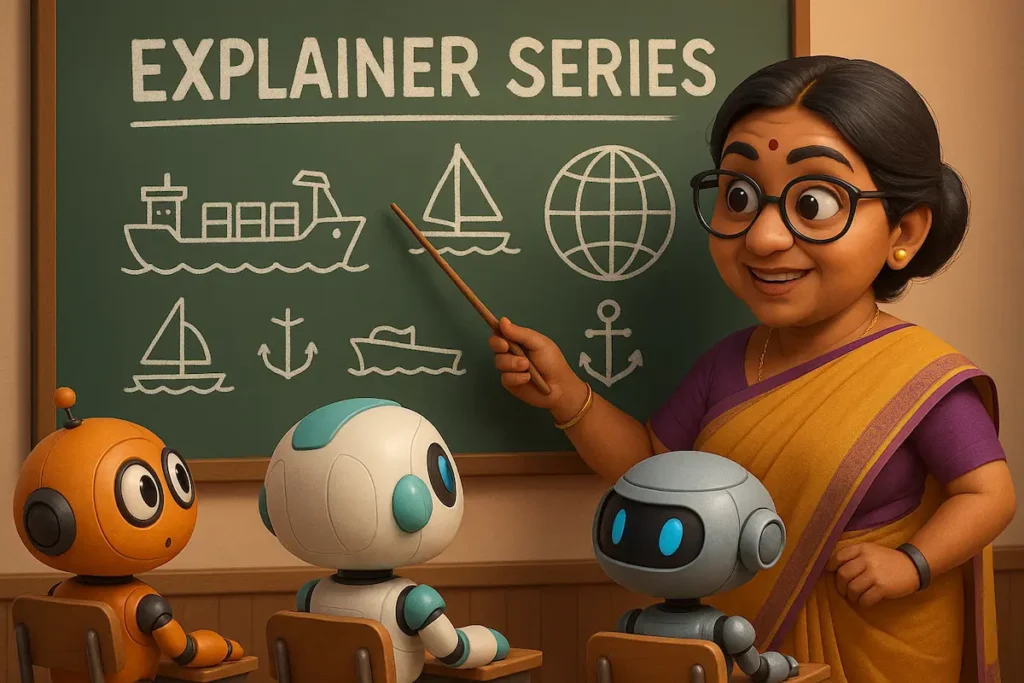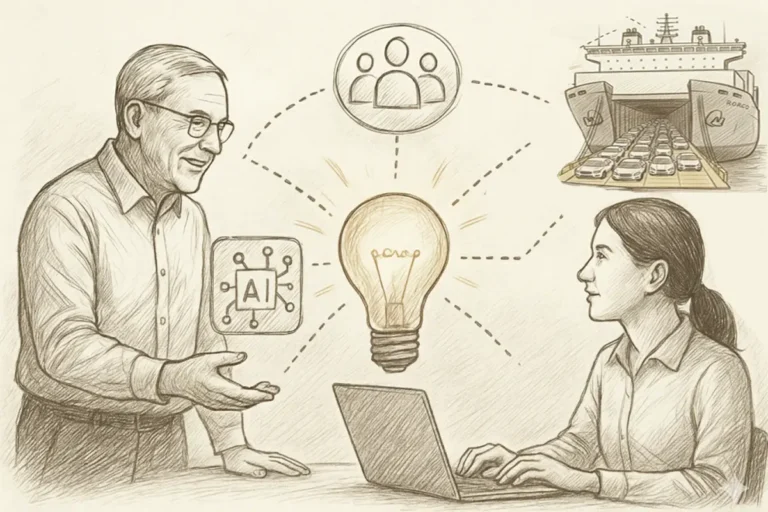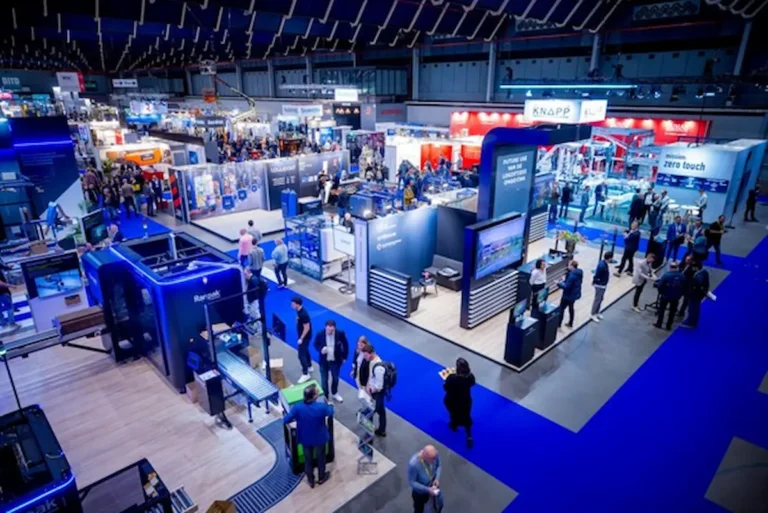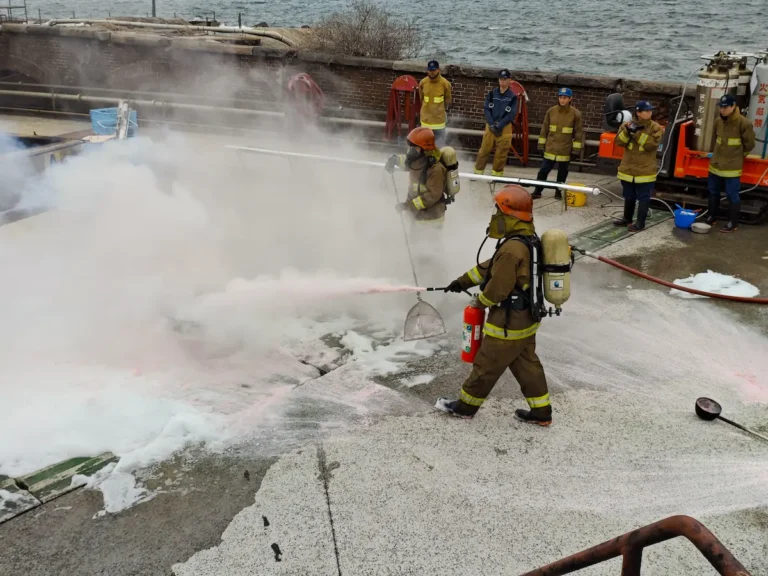Businesses and leaders are managing global supply chains in an increasingly volatile world. Port congestion, climate targets, shifting alliances, and supply chain disruptions are daily concerns.
This is all the more challenging if you are a port. So, what does a leading European port do to remain competitive, sustainable, and innovative in such an environment?
To find out, I sat down with Luc Arnouts, Vice President of the Port of Antwerp-Bruges on the sidelines of CHAINge EU where I also had the privilege of sharing a platform with Luc.
In an exclusive in-depth discussion, Luc gave me his insights on strategy, sustainability, digitalisation, and what sets the Port of Antwerp-Bruges apart.
Moving beyond rivalries
Antwerp-Bruges recently made headlines for surpassing Rotterdam in container throughput in Q1 2025. Luc Arnouts was quick to downplay any triumphalist narrative.
“Let us not over-exaggerate this,” he cautioned. “We have been the two major container ports in Europe for decades, and our market shares have converged. Being number one in a particular metric is nice, but it is not the real goal.”
“Instead, Antwerp-Bruges focuses on being the best port holistically – innovating, reducing its environmental footprint, and developing its role as both an industrial cluster and an energy hub” added Arnouts
Arnouts stressed that long-term competitiveness is about far more than raw throughput numbers.
How has Antwerp-Bruges maintained its edge?
Arnouts offered a detailed answer rooted in what he terms “four pillars”:
- Port Handling – The traditional role of loading and unloading ships remains essential, but efficiency and reliability are critical.
- Logistics Function – Not just storing cargo but adding value. For example, steel from India can be cut to size in Antwerp service centres so that customers get customised, finished goods in less than 24 hours instead of waiting weeks.
- Industrial Cluster – The port hosts Europe’s largest integrated chemical cluster. Raw materials arrive by ship and leave as finished or semi-finished products, leveraging the port’s logistics system.
- Energy Hub – This is about the future. Antwerp-Bruges is investing in green molecules and green electrons to meet EU Green Deal targets, supporting both port operations and the broader industry.
“These four pillars together make us a strong player in the European scene,” Arnouts said.
Connectivity: The key to supply chain
Supply chains live or die by connectivity. Arnouts repeatedly returned to this theme.
“You can have the best port in terms of quality of warehouses, speed of operation and container terminals or speed of operation, but if your port is not connected, you don’t play in the International supply chain game” explained Arnouts.
Antwerp-Bruges boasts connections to over 1,000 ports worldwide and offers robust hinterland links through multimodal solutions:
- Road and trucking networks
- Rail connections at every terminal
- Inland waterways (barges carry over 40 percent of cargo to and from the European interior)
- Pipelines for liquid, gas, and increasingly green fuels
Flexibility is built into the system. For example, when Rhine river water levels drop, traffic can shift seamlessly to rail.
Sustainability at the Core
Climate goals and decarbonisation targets are non-negotiable for European ports today.
Arnouts was unequivocal: “Sustainability is at the core of our strategy. We want to be the port that reconciles people, economy, and climate”
To make that real, Antwerp-Bruges uses the United Nations Sustainable Development Goals (SDGs) as a framework. Every new project must advance at least one of five selected SDGs.
“It is a way to ensure everyone in the organisation takes sustainability seriously,” he said.
But it is not just about planning documents. The port is investing heavily in its energy transition:
- Becoming a multi-fuel port, capable of supplying everything from heavy fuels to LNG to future fuels like green hydrogen, ammonia, and methanol.
- Enabling green bunkering: Last year, Antwerp-Bruges hosted its first green methanol bunkering operation.
- Importing green molecules: The port is developing infrastructure to receive, store, and distribute new fuels essential for decarbonising shipping and local industry.
Decarbonising shipping is one piece of the puzzle. Antwerp-Bruges is also working to provide green feedstocks to its vast chemical cluster. Local production will be part of the solution, but importing green molecules from international partners is essential.
Embracing innovation and digitalisation
No port can afford to ignore digital transformation.
“We see innovation as crucial,” Arnouts said. But it is not innovation for its own sake: “It has to solve real problems”
Examples of this innovation with purpose approach include:
- Drone Operations: The port has an operational drone system with ground stations covering inspections that used to require time-consuming manual checks.
- Digital Twin: Antwerp-Bruges was the first port with a fully operational digital twin, enabling advanced simulations (e.g., congestion modelling), predictive analytics (e.g., collision avoidance), and eventually real-time operational decision support.
- Port Community System: The port’s NextPort platform integrates data on maritime movements to improve transparency and coordination across the supply chain.
Even underwater inspections are being digitised through partnerships with specialist companies offering underwater drone services.
The Antwerp-Bruges merger: A model for others?
When quizzed on the 2022 merger of Antwerp and Zeebrugge and whether we will see more European port mergers, Arnouts suggested others might follow, but only with a clear strategic vision.
For Antwerp-Bruges, the merger was not about ego or scale for its own sake. Instead, it was driven by two main goals:
- Energy Transition: Zeebrugge’s coastal location, LNG expertise, and expansion potential complement Antwerp’s industrial base, enabling the port to import and distribute green fuels.
- Commercial Resilience: Combining capacities means more options during disruptions and congestion. For shippers, it offers flexibility across two distinct but integrated platforms.
Three years in, the merger is already delivering on these aims.
A message to Shippers, Carriers, and Logistics Partners
On the question of why customers should choose Antwerp-Bruges, Arnouts’s response was clear
- Connectivity and Flexibility: Multimodal links ensure resilient supply chains, even in the face of climate-related disruptions like low water on the Rhine.
- Value-Added Services: The port is not just a transit point. It is a hub where shippers can adapt, finish, and customise products to meet customer demands quickly.
- People and Culture: “There is a real proudness to be the best, and that mentality, we really cherish a lot” Arnouts said. Even at Christmas or New Year, the port keeps moving.
Antwerp-Bruges – More than a port !!
As supply chains evolve under pressure from climate goals, technological change, and geopolitical uncertainty, ports like Antwerp-Bruges does not rely just on traditional strengths.
As Luc Arnouts makes it clear – Antwerp-Bruges is betting on a model that is not just bigger, but better. A port built not only to move goods but to add value, enable industry transformation, and stay resilient in an uncertain world.

